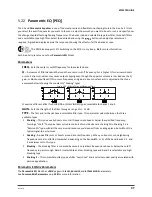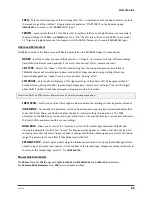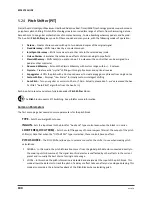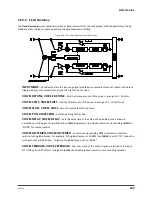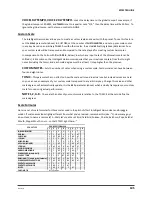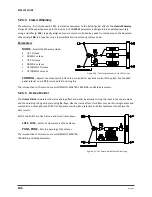
110
Doc Q7.0
STAGE 1, 2, 3… 16 SHIFT
– Tricky but ideally implemented for maximum flexibility, this parameter sets the
number of scale degrees that each note of the arpeggiator will be shifted above or below the note played.
Let’s look at the example of a four-stage arpeggio with values of 0, 2, 4, and 7. We’ll place it in the key of C for
comfort, with a scale type of IONIAN (MAJOR). When we play a C, the arpeggio will be heard as C-E-G-C’,
because:
C + 0 scale degrees = C…
C + 2 scale degrees = E (C…D, E)
C + 4 scale degrees = G (C…D, E, F, G)
C + 7 scale degrees = C’ (C…D, E, F, G, A, B, C’)
Remember that the notes of the arpeggios and the steps required to arrive at them are drawn only
from the current key/scale. Scales with more or fewer than seven notes in one octave (diminished, whole
tone, custom, etc.) can require some mental math, and it’s sometimes easiest to just use your ears.
Tip: By choosing the CHROMATIC scale, you can create a pattern that
ignores
the notes you play and simply
shifts pitch by the specified number of semitones.
The introduction to this section covers COMMON, MASTER, TRACKING, and MIX parameters.
Custom Shifter
5.24.9
The
Custom Shifter
is identical to the
Intelligent Harmony
Pitch Shifter (p.
) except that it uses the custom
scales tables stored in the global memory. See section
on p.
for more information on setting up global
scales.
VOICE 1 SCALE, VOICE 2 SCALE
– Selects the custom scale to use for each voice.
KEY
– This transposes both custom scales to the desired key. Internally the Axe-Fx II assumes all Custom
Scales have a root of A so this shift is relative to that note. For example, if your custom scale was in A major
and you wanted to perform in G major you’d set KEY to G. If your custom scale was in B minor and you wanted
to play in E minor you’d set KEY to “D”, since E is a 4
th
above B and D is a 4
th
above A.


